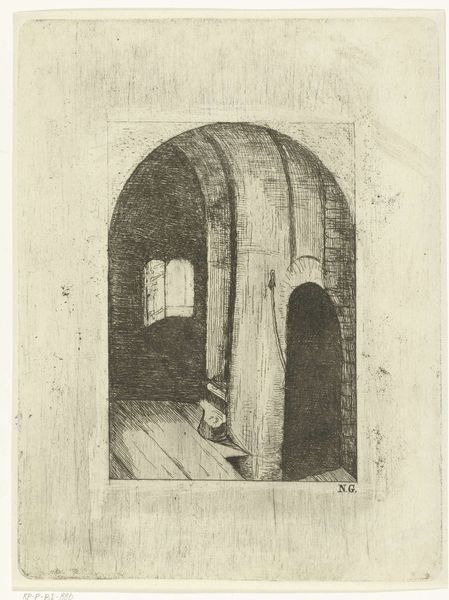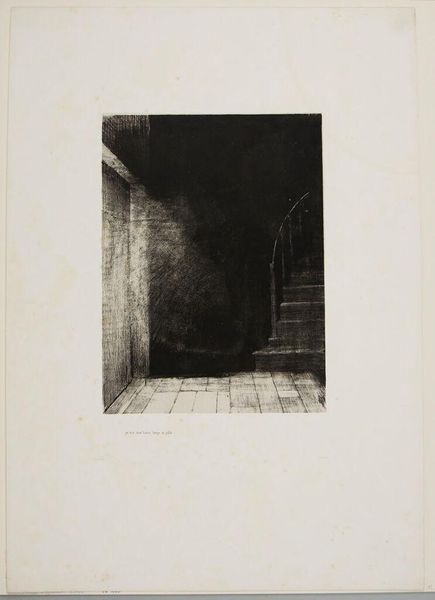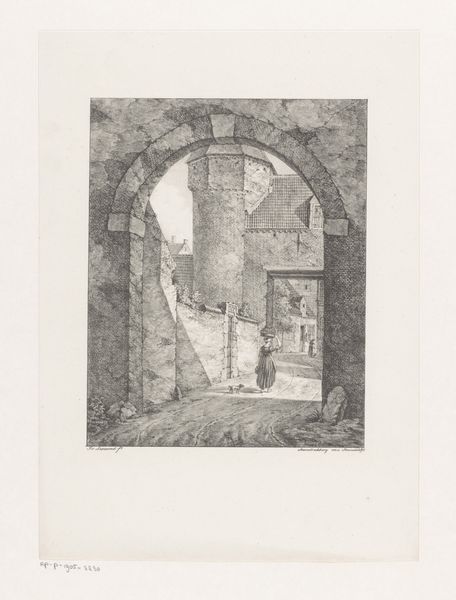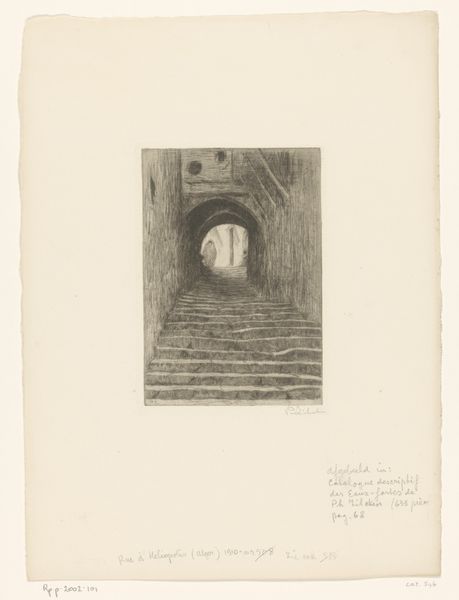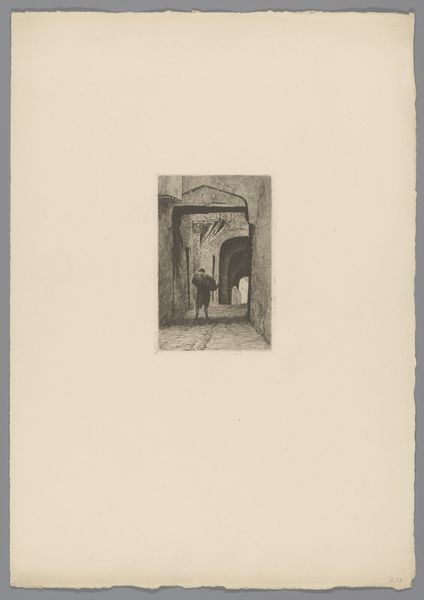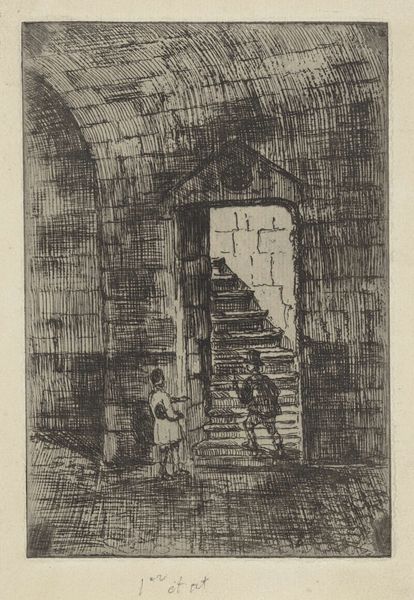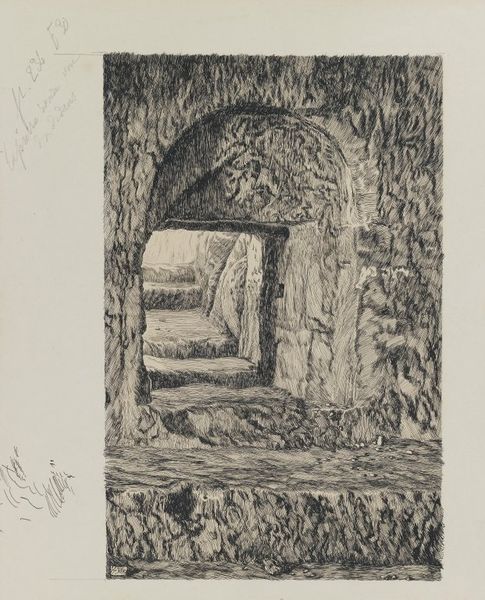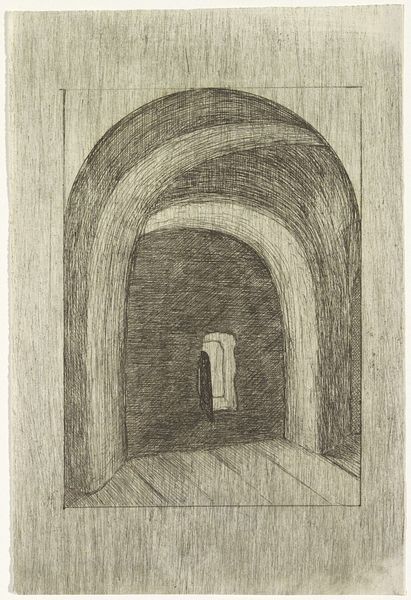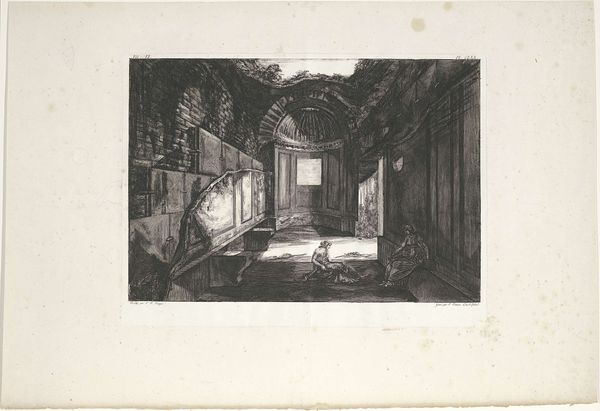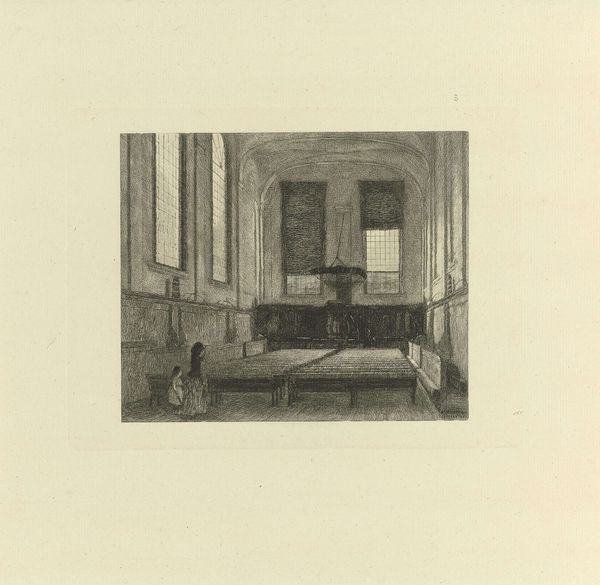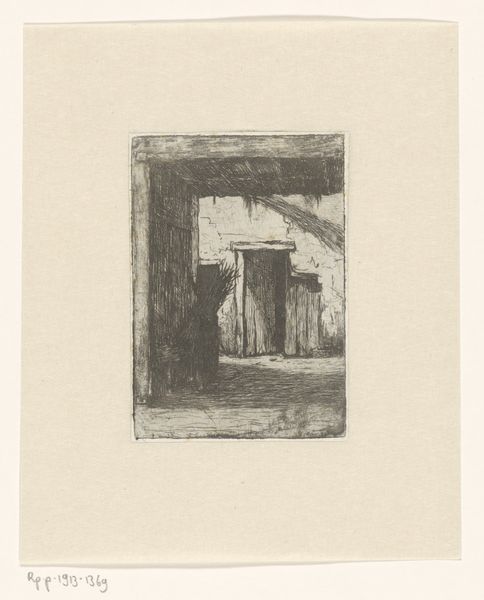
Gezicht op de trap in het Prinsenhof te Delft 1865 - 1899
0:00
0:00
drawing, print, etching, paper, ink, pencil
#
pencil drawn
#
drawing
# print
#
etching
#
pencil sketch
#
landscape
#
charcoal drawing
#
paper
#
ink
#
pencil drawing
#
pencil
#
genre-painting
Dimensions: height 120 mm, width 80 mm
Copyright: Rijks Museum: Open Domain
Editor: This is "Gezicht op de trap in het Prinsenhof te Delft," an etching by jonkheer Barthold Willem Floris van Riemsdijk, created sometime between 1865 and 1899. The scene, rendered in ink on paper, has such a contemplative atmosphere to it. How would you interpret the significance of this subject matter during that period? Curator: Well, looking at it through a historical lens, this work speaks volumes about the evolving perception of historical spaces in the 19th century. We have an artist capturing a specific place – the Prinsenhof in Delft – at a time when national identity and historical consciousness were really on the rise. Why do you think an artist might choose such a mundane scene within a historical location? Editor: Maybe to find history in the everyday, to suggest it's not just battles and treaties but also in these quiet, overlooked corners? Curator: Precisely! Think about what the Prinsenhof represented – a site tied to William of Orange and the birth of the Netherlands. By focusing on the staircase, van Riemsdijk shifts away from grand narratives and towards a more intimate engagement with the past. We also should consider the medium; prints, etchings particularly, became increasingly accessible. Who do you think was the target audience for works like this? Editor: Maybe a growing middle class with an interest in history and art but not necessarily the resources for large oil paintings? Curator: Exactly. Etchings like these played a role in shaping public memory. Now that you appreciate that context, does it change your initial reading of its "contemplative atmosphere?" Editor: It does, a bit. It seems more deliberate now. It is also a statement of identity through quiet observation and circulation via print. Curator: Right! And this brings the public role of art, shaping a national and cultural view. Food for thought about the layers that an etching of a stairwell can have, wouldn't you agree? Editor: Absolutely. It's a fantastic illustration of how a seemingly simple image can encapsulate broader social and cultural shifts. Thanks for the perspective!
Comments
No comments
Be the first to comment and join the conversation on the ultimate creative platform.
